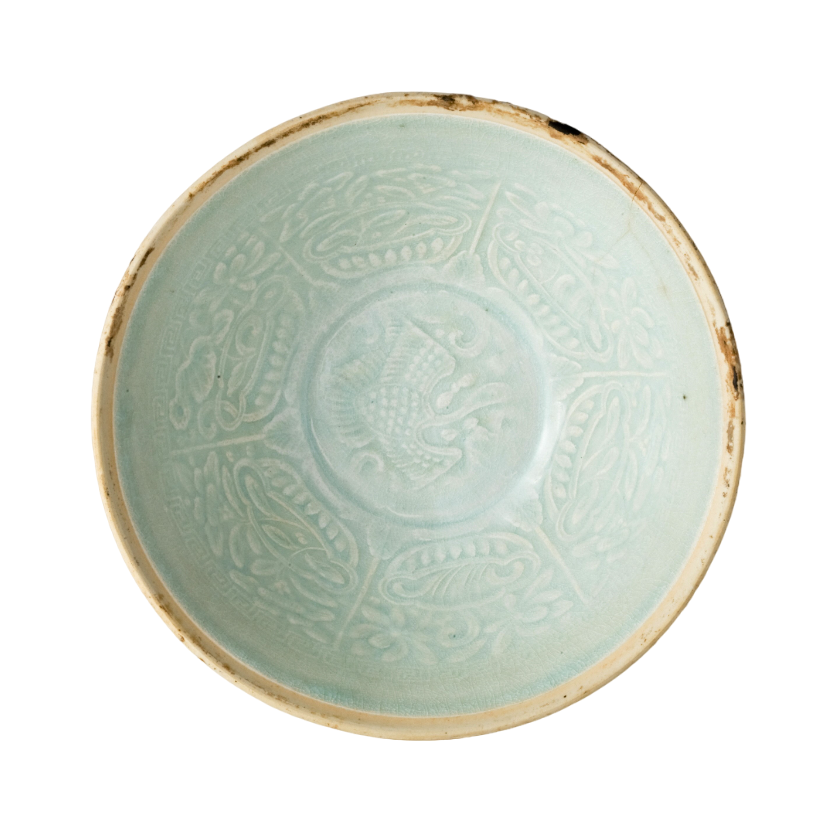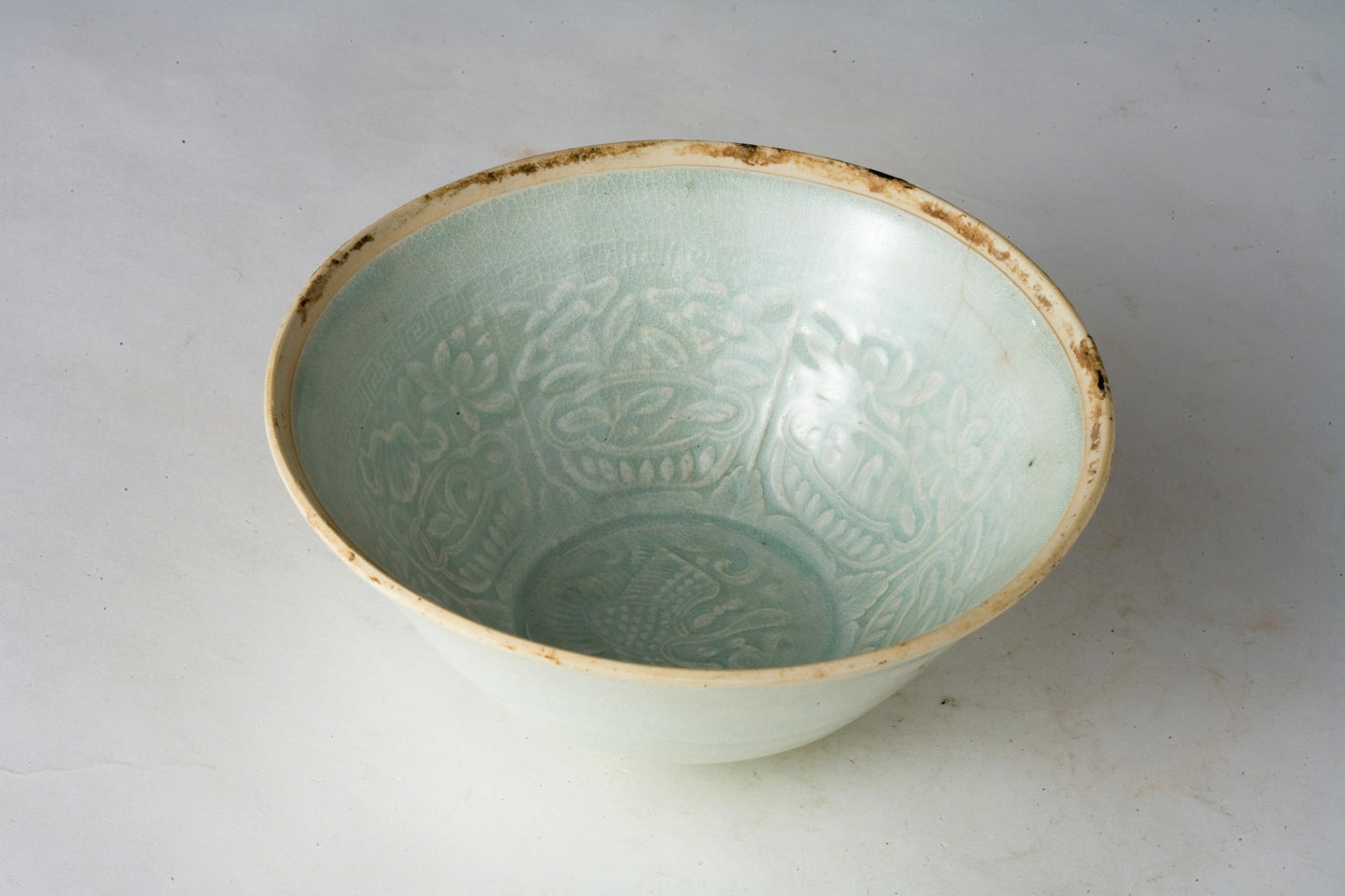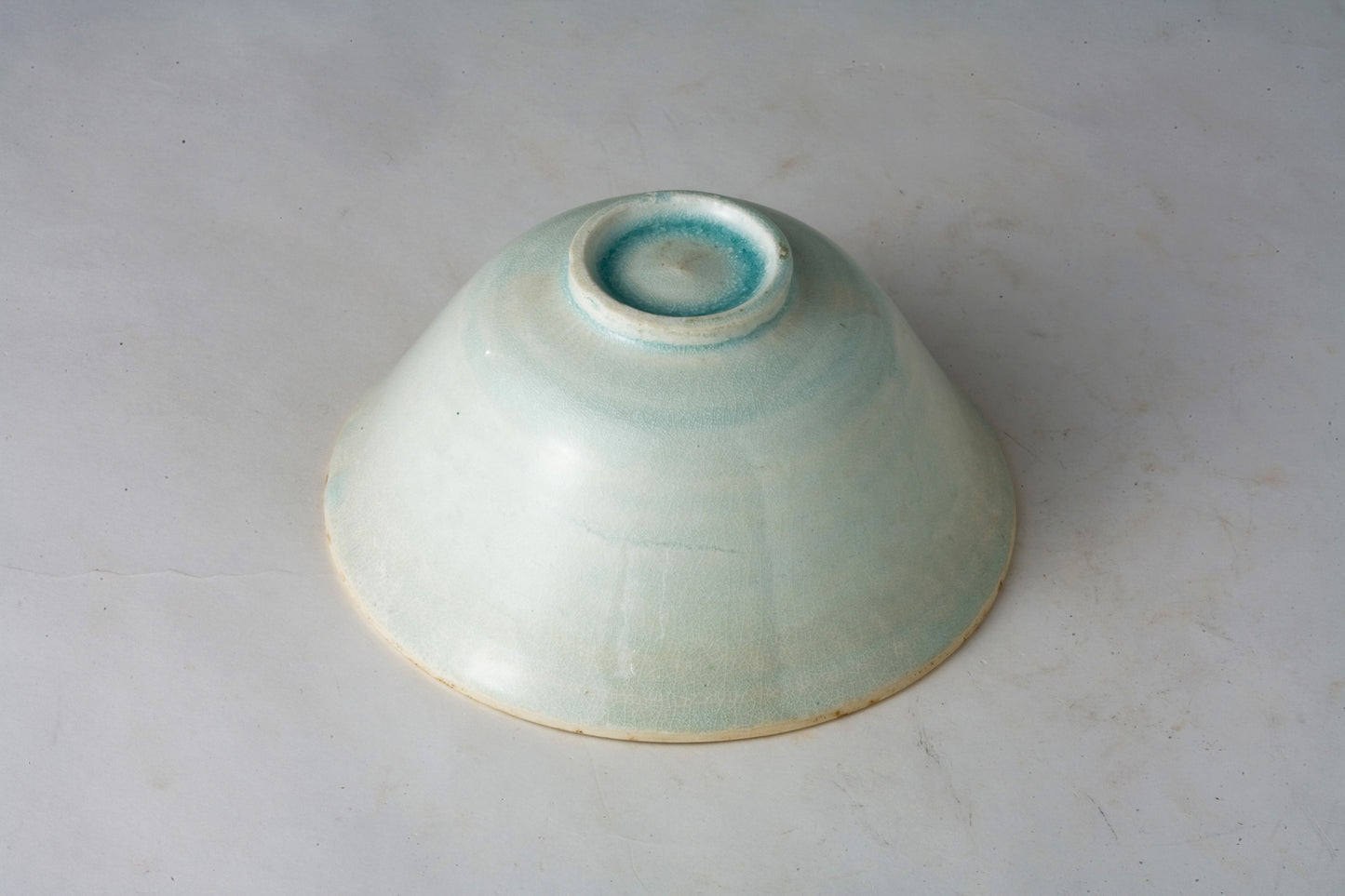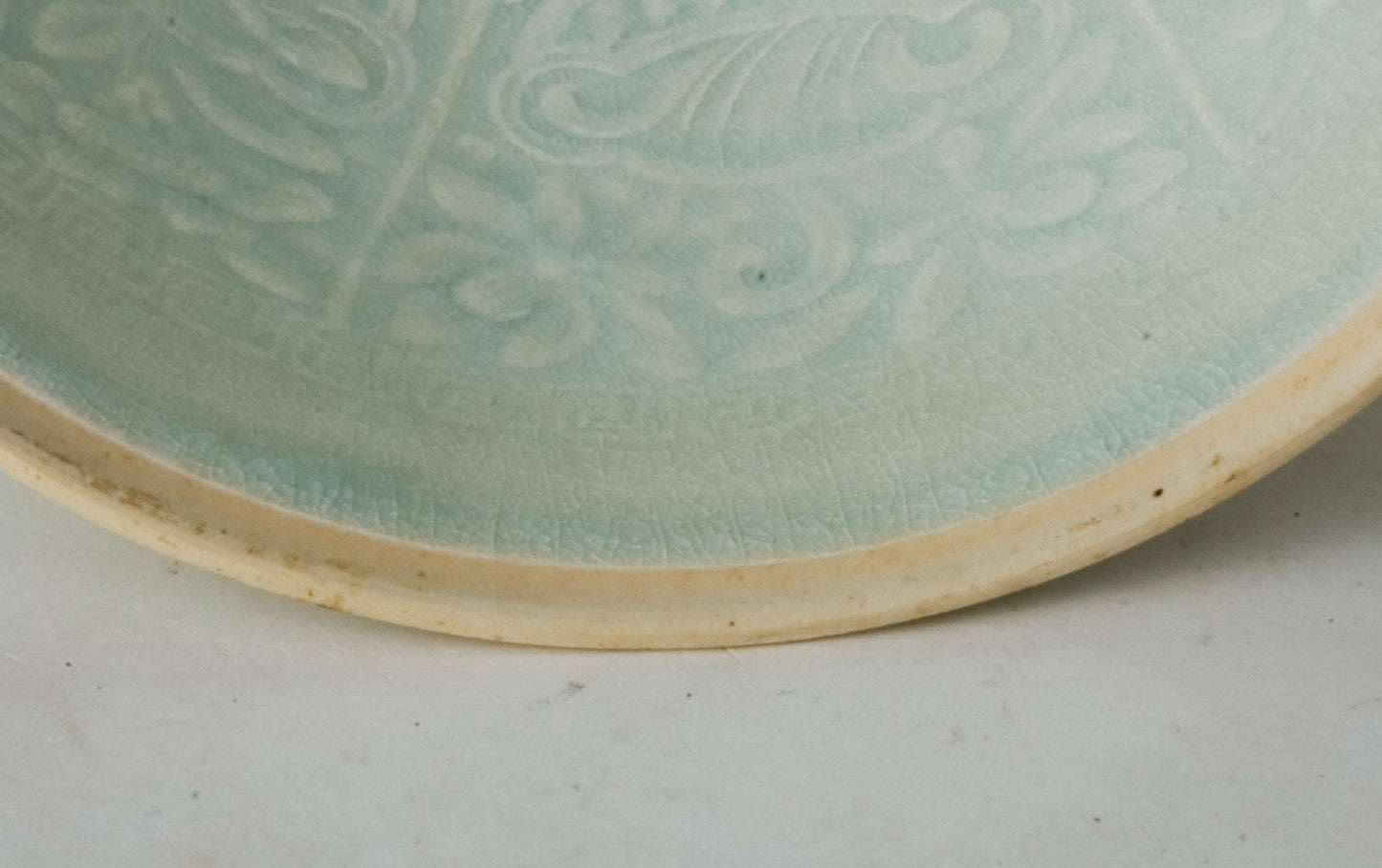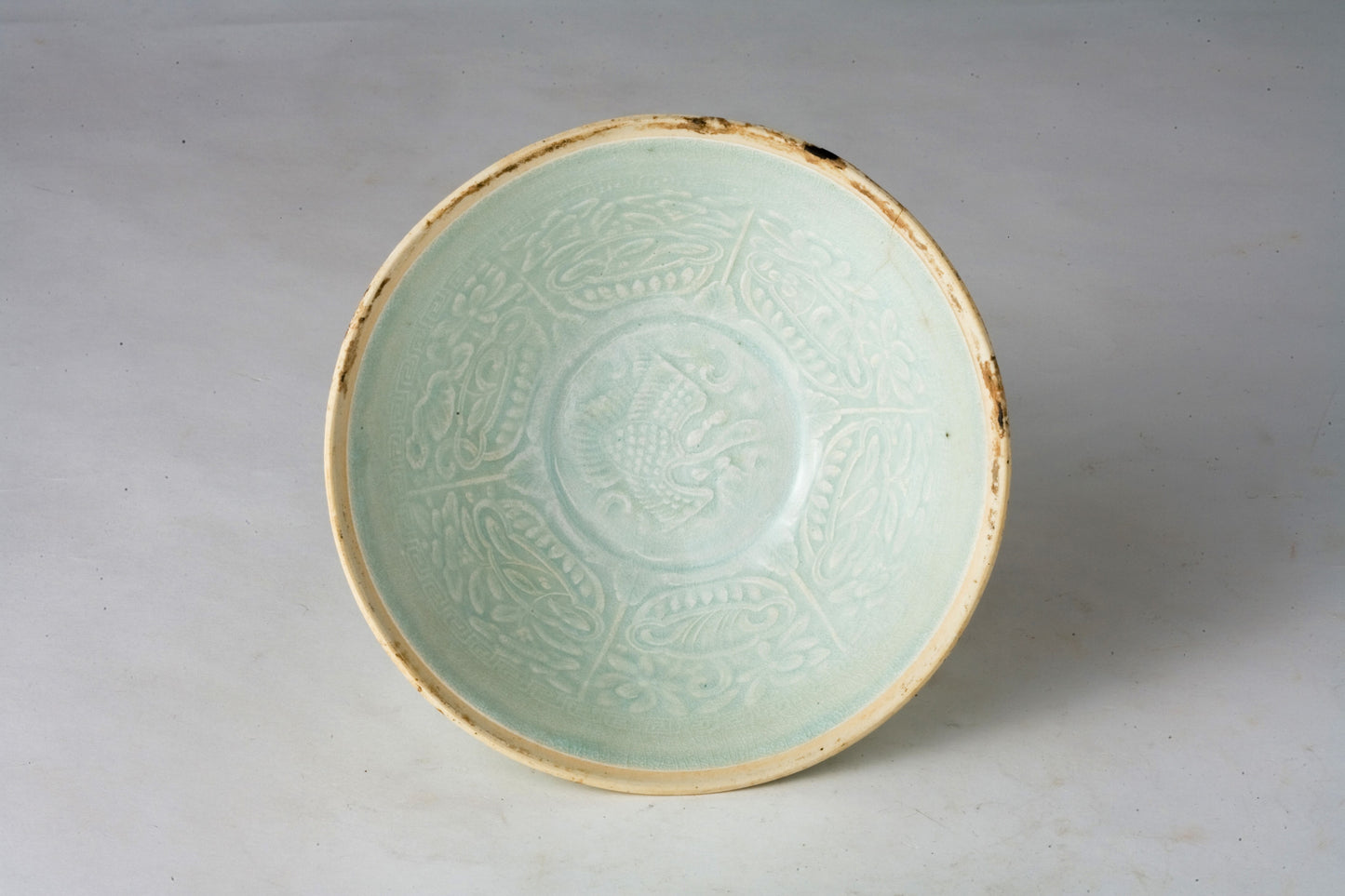AUA Oriental Art
Qingbai Bowl with carving of crane, Song Dynasty
Qingbai Bowl with carving of crane, Song Dynasty
Couldn't load pickup availability
The crane, a traditional symbol of longevity and auspiciousness, is prominently placed at the center, creating a harmonious and aesthetically balanced effect. The border of the dish is decorated with simpler patterns, accentuating the central crane motif. Qingbai ware is a distinctive type of Chinese ceramic that flourished during the Song period, characterized by its translucent glaze that often reveals incised or relief decorations underneath. This particular dish exemplifies the high level of craftsmanship and premium materials required at the time, featuring delicate carvings and a soft, lustrous glaze.
Period : Song Dynasty(1271-1368)Type : Bowl
Medium : Qingbai
Size : 7.0 cm(Height), 15cm(Diameter)
Condition : Good(crack on the upper edge, the part has been repaired and is safe.)
Provenance : Acquired in late 1990s from Hongkong
Reference : Sotheby's Newyork 26 September 2023 - CHINA / 5000 YEARS - Lot1361
(Price Range : 3,000 - 5,000 USD / Type : Closely related)
https://www.sothebys.com/en/buy/auction/2023/china-5000-years-4/a-carved-qingbai-floral-bowl-southern-song-dynasty
* Qingbai Ware
Qingbai ware, which translates to "blue-white ware," is a type of Chinese porcelain that was made at the Jingdezhen and other kilns in the porcelain-producing regions of China, primarily during the Song dynasty (960–1279) and continuing into the Yuan dynasty (1271–1368). It is known for its translucent quality and the pale blue-green glaze that characterizes most of its pieces.
The qingbai glaze was achieved using a small amount of iron in a reduction-fired atmosphere, which produced the subtle blue-green tint. The body of qingbai ware is typically made of a fine, white porcelain that is often referred to as 'artificial jade' due to its resemblance to the esteemed stone. The thinness of the body and the high firing temperatures used contributed to the translucent quality of the finished product.
Qingbai ware includes a range of items such as bowls, cups, vases, and ewers. The designs are usually simple and elegant, with an emphasis on the graceful lines and form of the objects. Decorative motifs, when present, are often incised, carved, or molded in relief and can include floral patterns, dragons, phoenixes, and other symbolic elements drawn from Chinese culture.
Over time, the technology and techniques used to produce qingbai ware evolved, leading to innovations in glaze and decoration that would influence later types of Chinese porcelain. Despite these changes, qingbai ware remains a distinguished example of the potters' art in Song and Yuan China, reflecting the refined aesthetic and cultural values of the period.
Share
